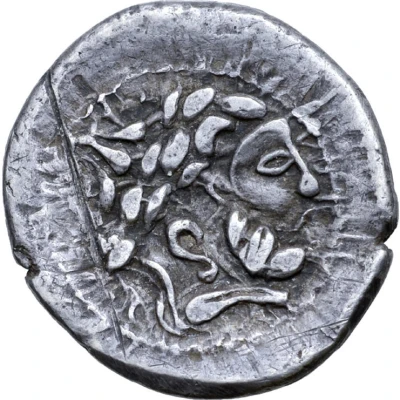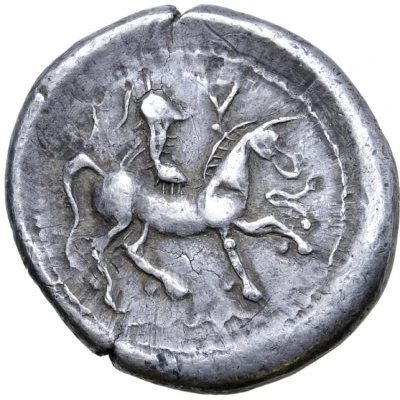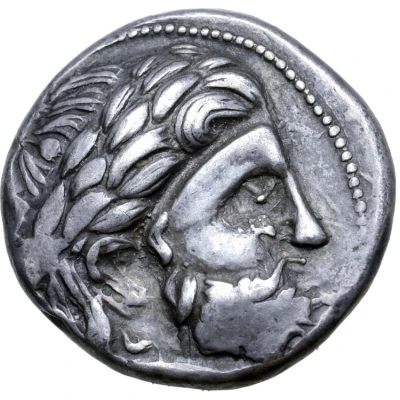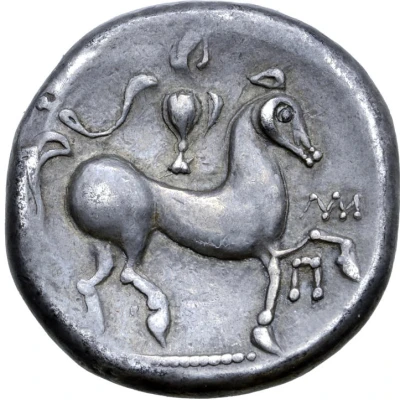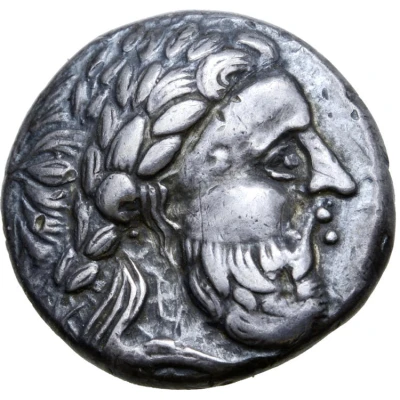
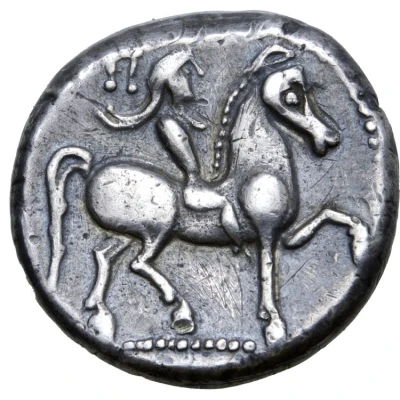

© Roma Numismatics Limited
Tetradrachm Pi Type 300 BC - 201 BC
| Silver | 13.06 g | 22 mm |
| Issuer | Uncertain Eastern European Celts (Uncertain Central and Eastern European Celts) |
|---|---|
| Type | Standard circulation coin |
| Years | 300 BC - 201 BC |
| Value | Tetradrachm (1) |
| Currency | Drachm |
| Composition | Silver |
| Weight | 13.06 g |
| Diameter | 22 mm |
| Shape | Round (irregular) |
| Technique | Hammered |
| Orientation | Variable alignment ↺ |
| Demonetized | Yes |
| Updated | 2024-10-09 |
| Numista | N#191293 |
|---|---|
| Rarity index | 100% |
Reverse
Stylised rider wearing crested helmet on horseback to right; Π behind.
Comment
Carpathian region.Examples of this type:
• Example #1 (13.06g, 22mm, 7h; Good Very Fine)
© Image courtesy of Roma Numismatics Limited
◦ Ex-Hermann Lanz Collection; published in Kostial #716;
◦ Exhibited by the Staatlichen Münzsammlung München at the 1997 International Numismatic Congress in Berlin; at the Berliner Bank also in 1997; also exhibited at the Luitpoldblock Palmengarten, Munich in 2003 (exhibition #120[reverse]).
◦ Auctioned by Roma Numismatics Ltd, Auction XVIII, 29 September 2019, lot 182. Sold for 700 GBP.
• Example #2 (12.95g, 21mm, 7h; Good Very Fine)
© Image courtesy of Roma Numismatics Limited
◦ Ex-Hermann Lanz Collection; published in Kostial #717;
◦ Auctioned by Roma Numismatics Ltd, Auction XVII, 28 March 2019, lot 186. Estimated at 200 GBP, unsold.
• Example #1 (13.06g, 21mm, 7h, Good Very Fine):
© Image courtesy of Roma Numismatics Limited
◦ Ex-Hermann Lanz Collection; published in Michaela Kostial - "Kelten im Osten. Gold und Silber der Kelten in Mittel und Osteuropa, Sammlung Lanz", München, 1997, #718;
◦ Auctioned by Roma Numismatics Ltd, E-Sale 60, 1 August 2019, Lot 36. Sold for 550 GBP.
Interesting fact
One interesting fact about this coin is that it features a unique blend of Celtic and Greek influences in its design. The obverse side of the coin depicts a stylized head of a Celtic deity, while the reverse side features the image of a seated Greek goddess, likely Hera or Demeter. This fusion of cultural styles reflects the complex cultural exchange and trade networks that existed in ancient Europe.
